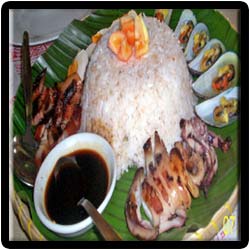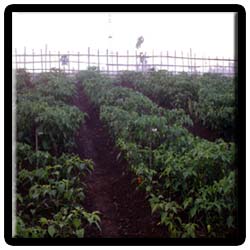CULTURE IS THE ART OF LIVING
The people of Nagaland are generally known as Naga's and they constitute several groups of tribals occupying the North Eastern part of India and north-western Burma. These conglomerations of tribes mostly have identical culture and traditions and form the majority ethnic group in the Indian states of Nagaland, Manipur, Arunachal Pradesh and Assam. The people of Nagaland get their name Naga from the Burmese word "NAKA" which means people of perforated ears to adorn themselves with big wooden plugs and other ornaments. Basically their origin is of the Indo-Mongoloid family and these tribes of the hilly region are characterized physically by a medium height, very low facial index with straight hair and eyes different from that of the Mongolian form.
The culture of Nagaland can be best expressed as comprising the following : ORIGIN AND ETHNICITY
Some of the major tribal sects of the people of Nagaland are Angami, Ao, Chakhesang, Chang, Khemungan, Konyak, Lotha, Phom, Pochury, Rengma, Sangtam, Sema, Yimchunger, Poumai, Rongmei Naga, Maram Naga, Nocte, Phom, Pochuri, Tangsa, Tutsa, Zeliang and Wancho. The Chakhesangs were earlier known as Eastern Angamis and are a combination of the Chakri, Khezha and Sangtam sub-tribes. Each tribal community have their own unique cultural features and various distinct languages like Tibeto-Burman, Angami–Pochuri, Ao, Kukish, Sal, Tangkhul, Thangal,Maram, Nagamese creole and Zeme. The people of Nagaland belong to several tribal communities which in turn is further divided into a number of sub-tribal sections where all of them are believed to have derived their origin from the Indo-Mongoloid family. One of the most unique features of these ethnic groups in Nagaland is that they all wish to live in rural areas following their culture and traditions rather than moving onto urban areas. These different ethnic communities have provided the state with ground for dynamism quality and positive attitude development. The Naga's show a diversity in all their features whether it be language, festivals or the customs and traditions followed by the different ethnic groups of the state. One of the common languages spoken by the people of Nagaland is Nagamese and majority of them are Christians. There are records which confirm that the ethnicity has played a major role in developing the social structure of the people. Most of the Naga's follow Christianity as their major religion which has helped in providing a same platform for the people inspite of the presence of various ethnic communities. CULTURE
The culture and the social structure of the Nagas vary from one tribal community to another. There was a lot of inter- village quarrels happening in earlier days for choosing the sites for the village and was very much influenced by considerations of defensive strategy. The houses were usually built on the top of the hills enclosed with stone walls and heavy wooden gates with deep ditches dug around the wall. The dance of the Naga's is an example for the proof of the vibrant and dynamic cultural traditions of the north eastern state of India. The folk dances of the Naga's accompanied with excellent folk songs and native musical instruments clearly indicate the rich cultural heritage of the people of Nagaland. The dance of the Naga's is mainly dominated by the male members of the community who are fully dressed in traditional costumes and they usually dance in groups more preferably in closed circles. Each tribal community has their unique style of dance form. Some of the famous dances of the people of Nagaland are Zeliang dance, Cock dance, Fly dance, Cricket dance and Bear dance. An integral part of social and cultural lifestyle of the native population of Nagaland, the unique dancing styles of the state are performed with proper props of dao, shield or spear. The folk music of the Naga's again shows diversity in their melodious traditional rhythm depending on the various communities of the tribal people. The music composed is mainly based on features like religious beliefs, romance or bravery. CUSTOMS AND TRADITIONS
The people of Nagaland encourage marriage only outside of a social group. Thus people from the same community do not marry and also in case of any relationship between them then it considered as a social evil. In the Angamis community if a young boy shows a liking towards a girl then he conveys it to his father after which a friend is send to confirm the wishes of the elders. It the parents on the other side also agree then the bridegroom's father puts the matter further to the test by strangling a fowl and watching the way in which it crosses its legs when dying. If the legs are placed in an inauspicious attitude, the match is immediately broken off. If things go well the marriage is fixed but the girl also has the right to break the marriage even if she has some inauspicious dream.
The people of the Mongsen tribal community follow a strange custom wherein once a boy and girl are engaged they are allowed to go on a trading expedition for twenty days and if it turns out to be profitable then the marriage is fixed whereas if it is a loss then the marriage is broken. Most of the tribal community follow the custom of shaving the girls head until she reaches the marriageable age. The custom to be followed by a boy and a girl before their wedding vary from different communities like in the Angamis community a girl can have a lover before the wedding but they cannot exceed their limit. The people of the Sema community give lot of regard and care for the girls for the only reason that a girl fetches a handsome price at marriage and this price would be substantially reduced if she got involved in a scandal otherwise they end up paying fine.
COSTUMES
The main attire which falls in the costume of the Naga's is the shawls. The women mainly opt for plain blue cloth and a white cloth with black marginal bands which varies in its breadth. Usually the ladies of Angami community wear a petticoat called neikhro, a sleeveless top called vatchi and a white skirt called pfemhou. The Zemei women wear white-coloured clothes and skirts with very narrow black and red border. Men wear black kilt, decorated with embroidered cowries in three or four lines. Shawls of Lothas are graded by the number of gennas or festivals arranged by the wearer. The chief priest of the community wear phichu-pfe. Rongsu shawl is wearable only by those who have a glorious heritage of Mithun sacrifice, committed by the forefathers and also by the individual himself. There is a wide spectrum of shawls woven by the Yimchunger Nagas. Rongkhim is a fantastic shawl, wearable by a venerated warrior only. CUISINE

They also relish the meat of the elephant including skin. They also smoke the meat, dry it and preserve it for a long time. They boil both the meat and vegetable together. They are fond of chillies.There are three types of rice beer drinks namely the Zutho, Ruhi, and Dzutse.
OCCUPATION

FAMOUS PERSONALITIES
Lhoulienyu Suokhrie -(1900-1939), an early Naga leader, also a signatory in the historic Simon Commission pressing for Naga Independence.A. Z. Phizo (1903-1990) -Secessionist leader of Naga National Council(Died in exile in England).
Samuel Mezhur Sekhose (1918-1989) -an Educationist and the only Indian to receive the British Empire Medal (BEM).
Kiyanilie Peseyie (b. 1947) -Speaker of Nagaland Legislative Assembly (March 2003- January 2008; March 2008 – Present).
Neiphiu Rio (b. 1950) -present Chief Minister of Nagaland (March 2003- January 2008; March 2008 – Present).


